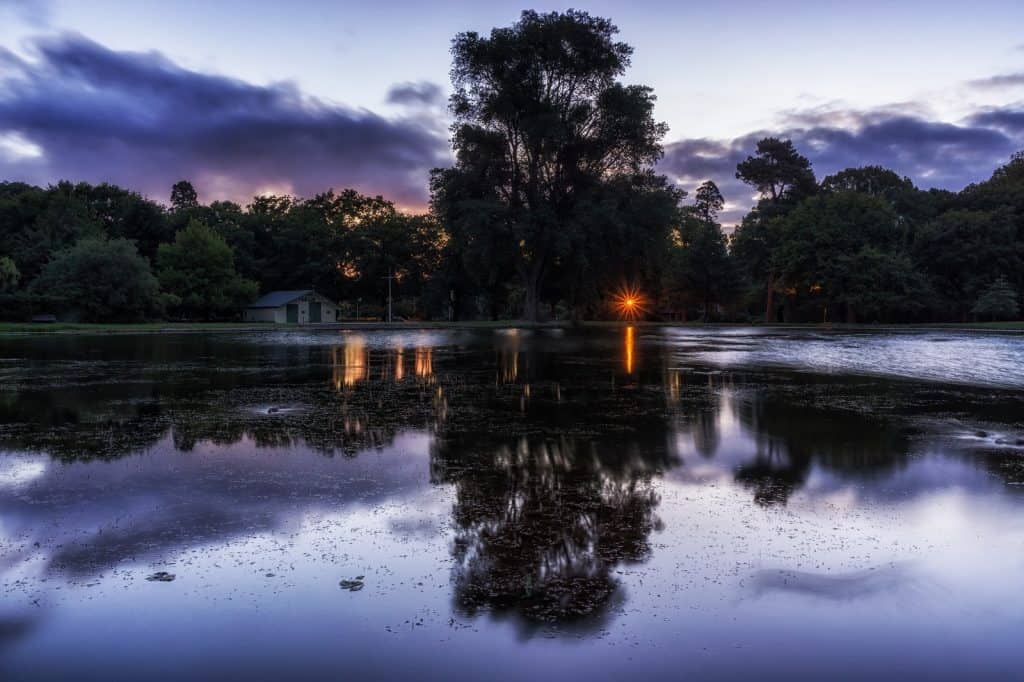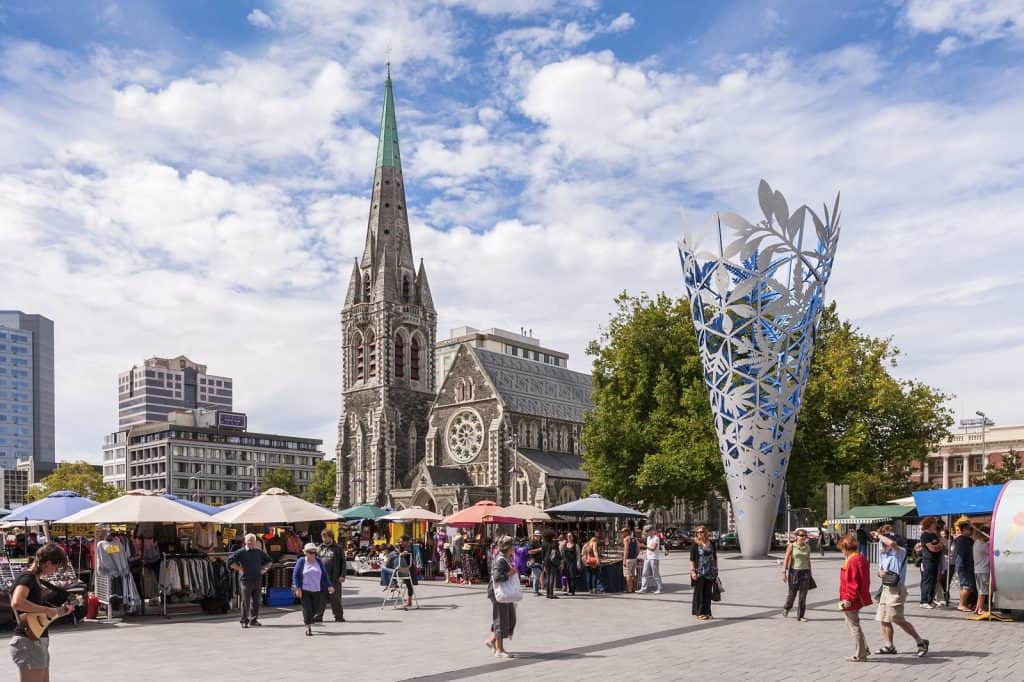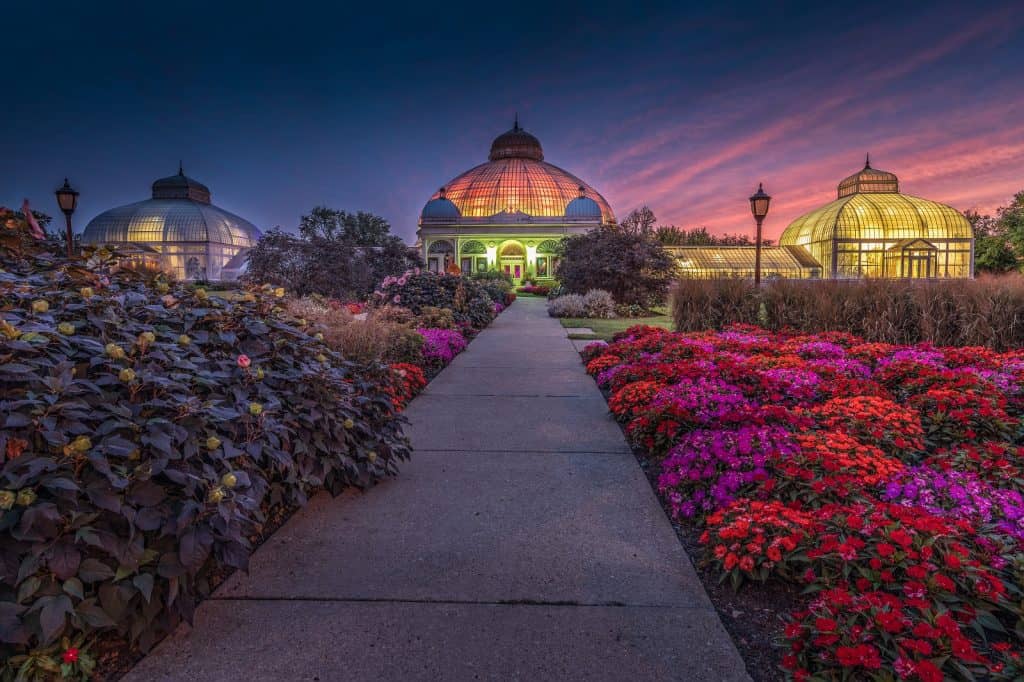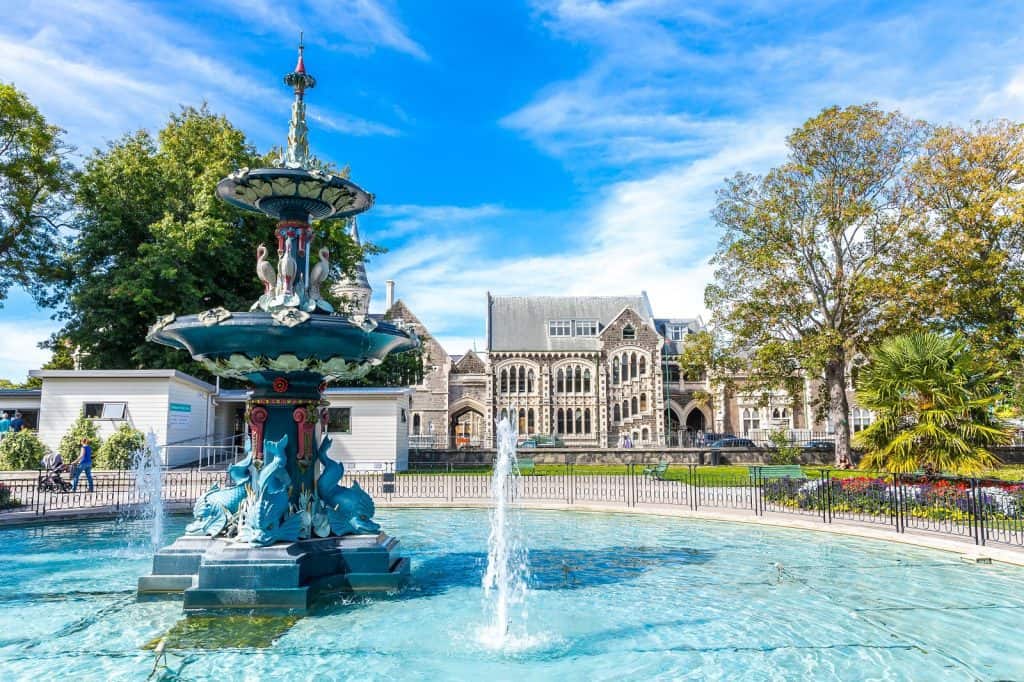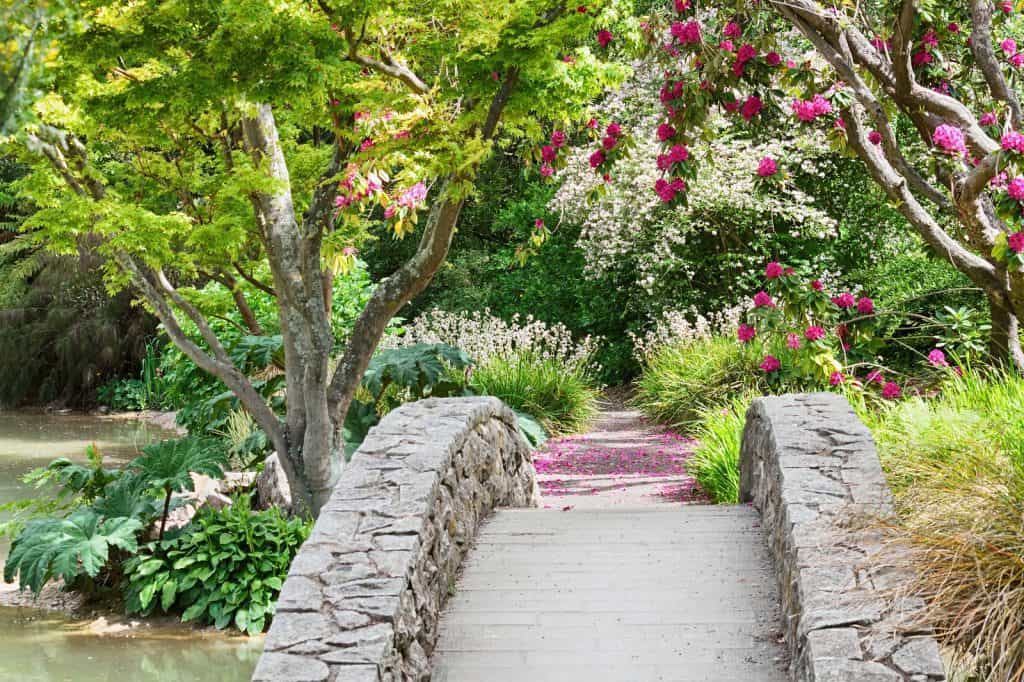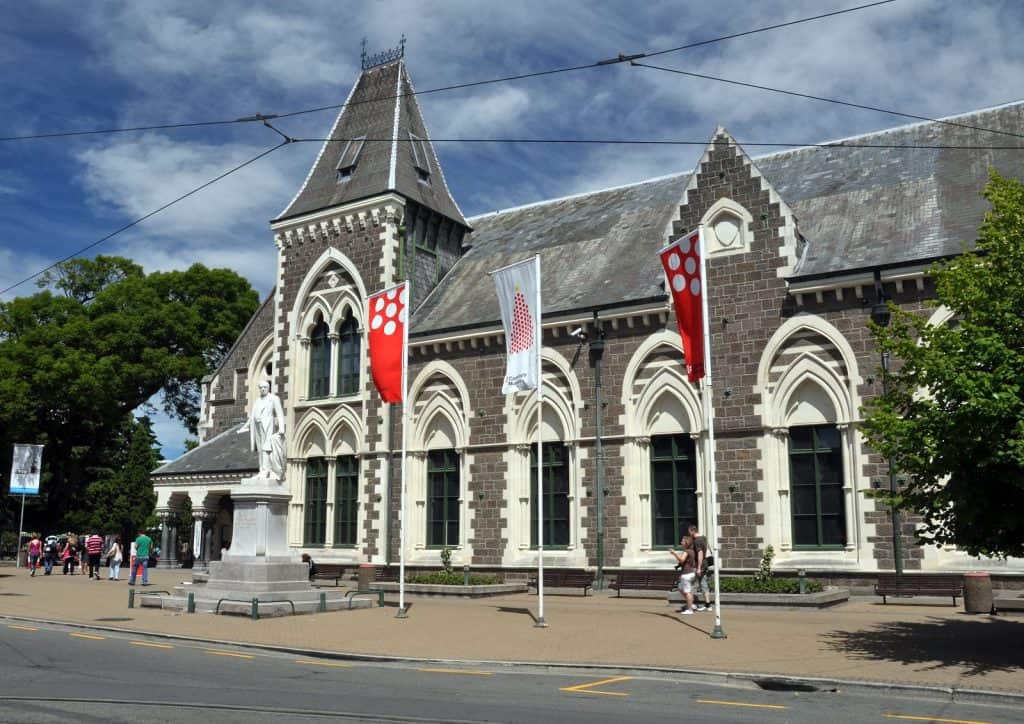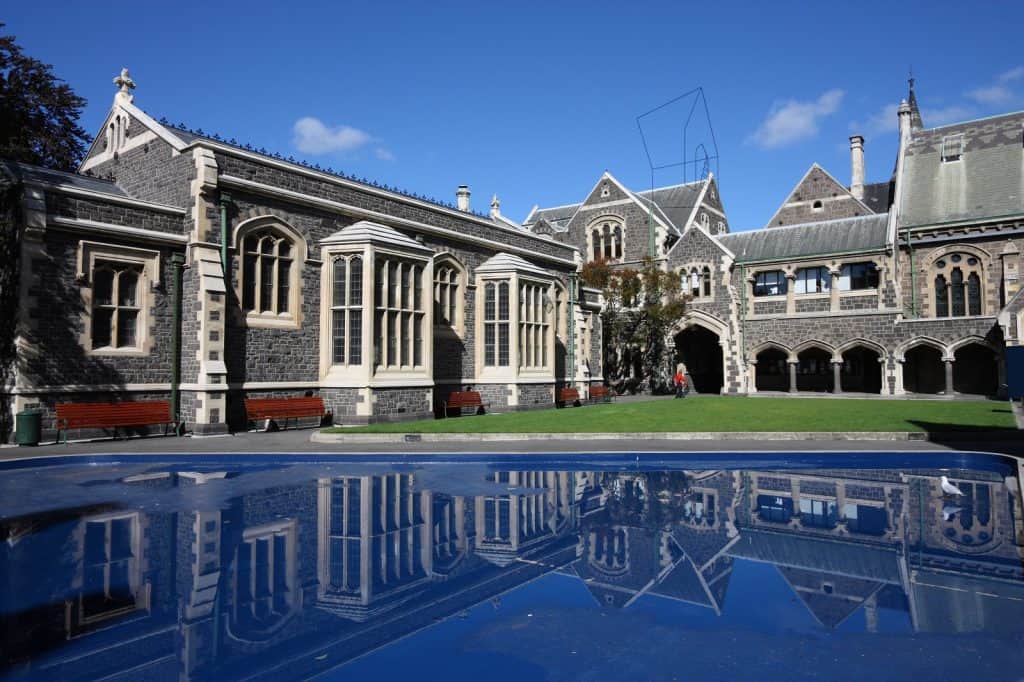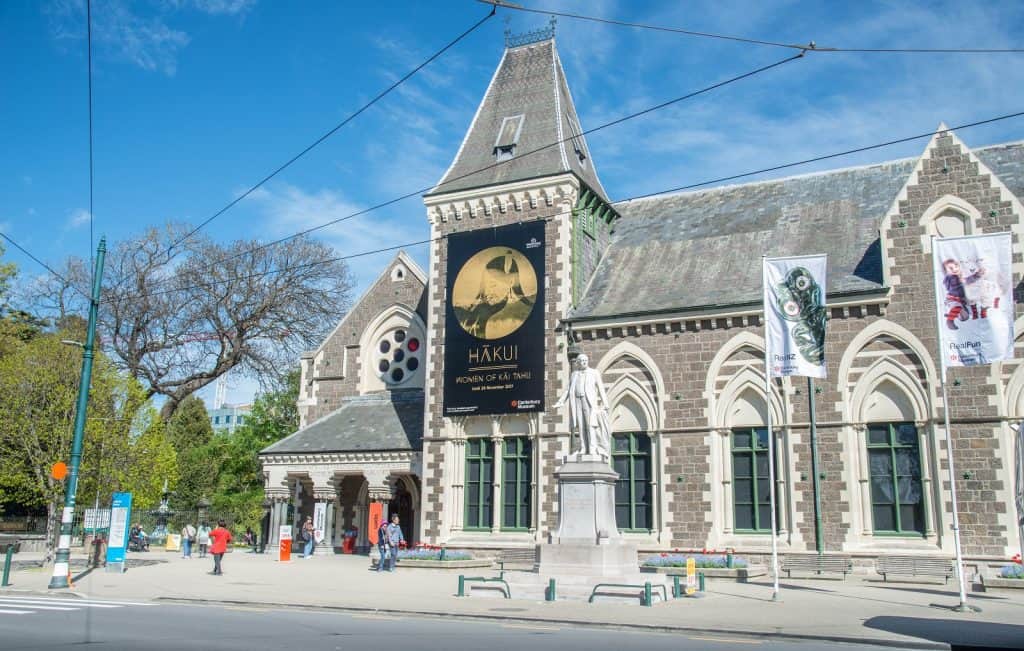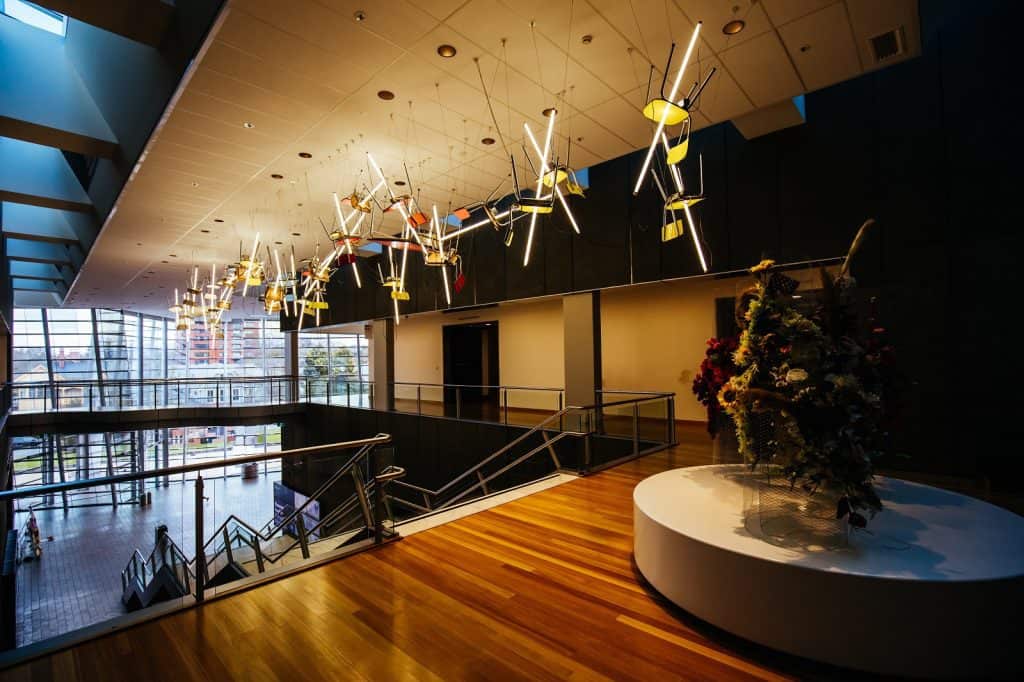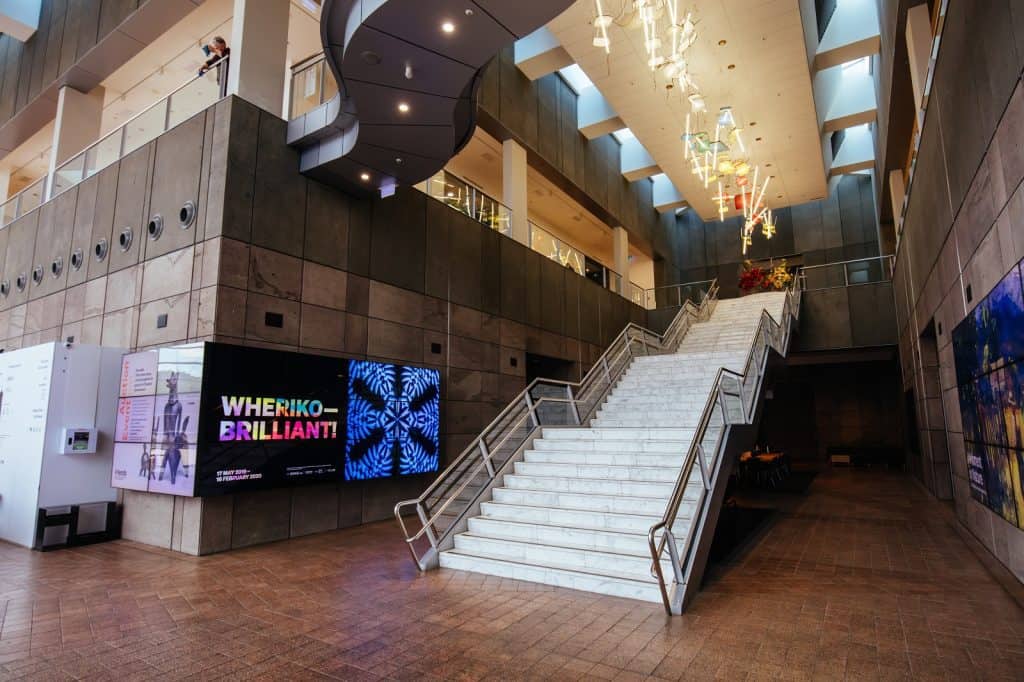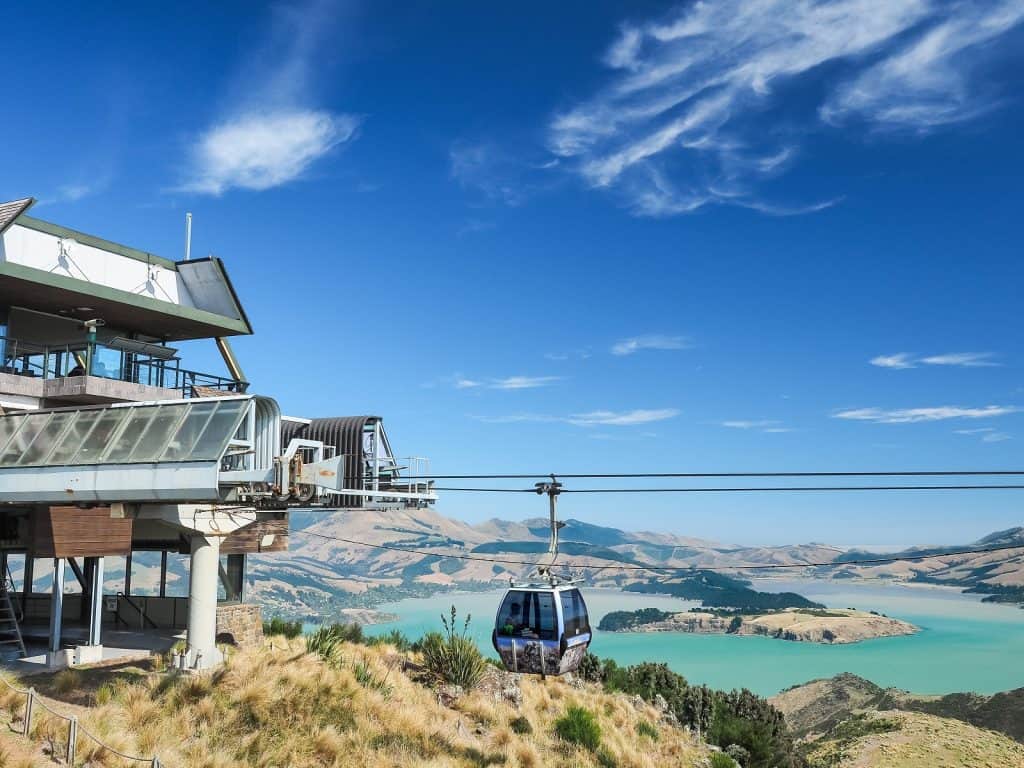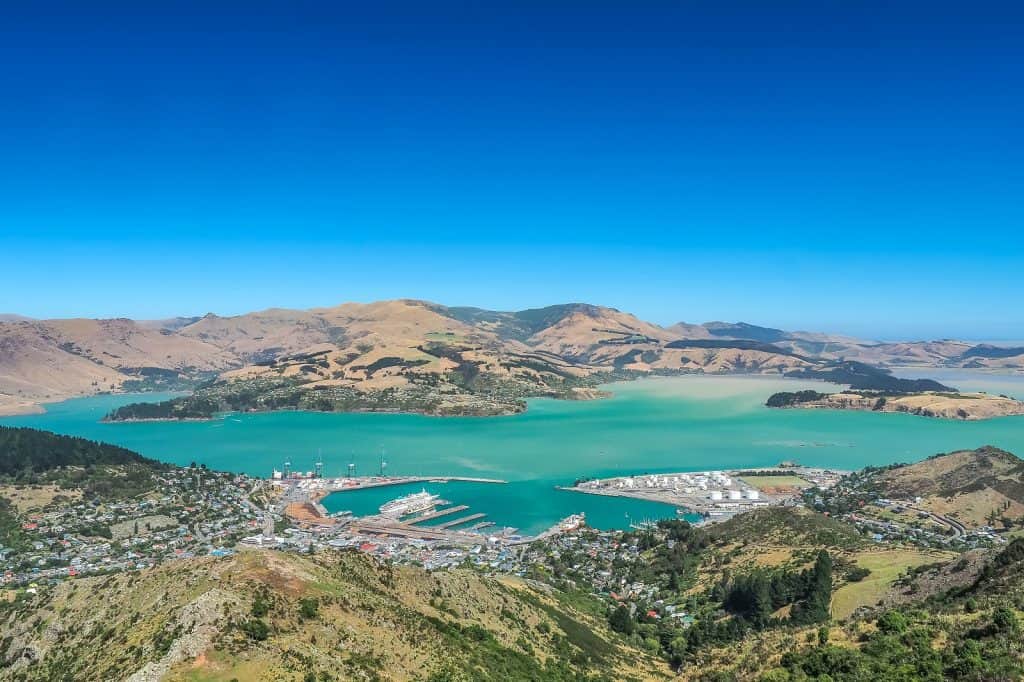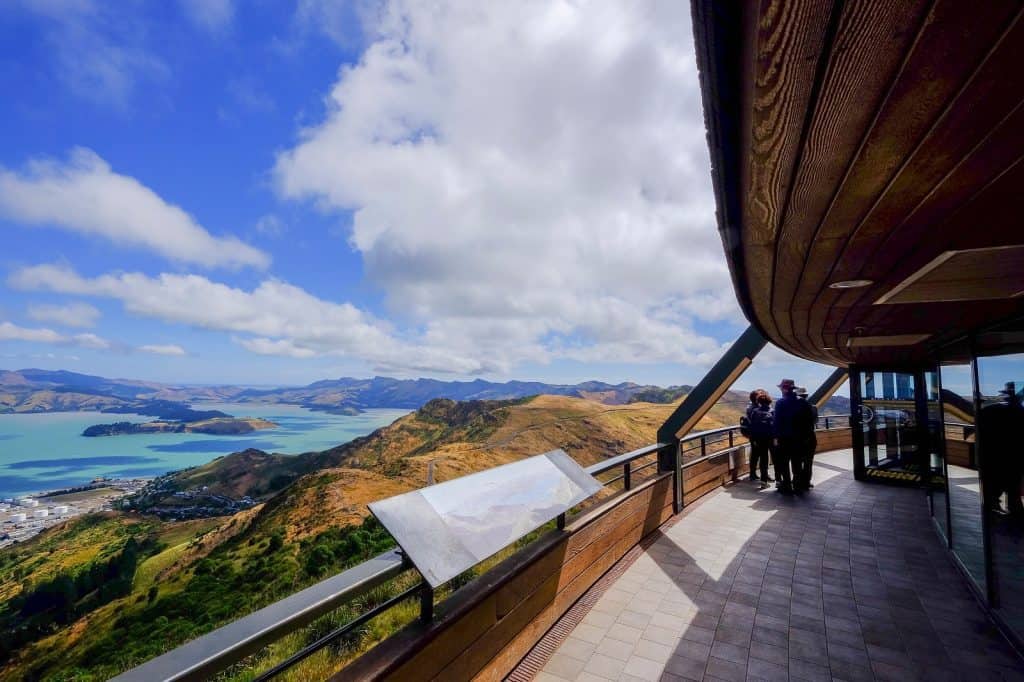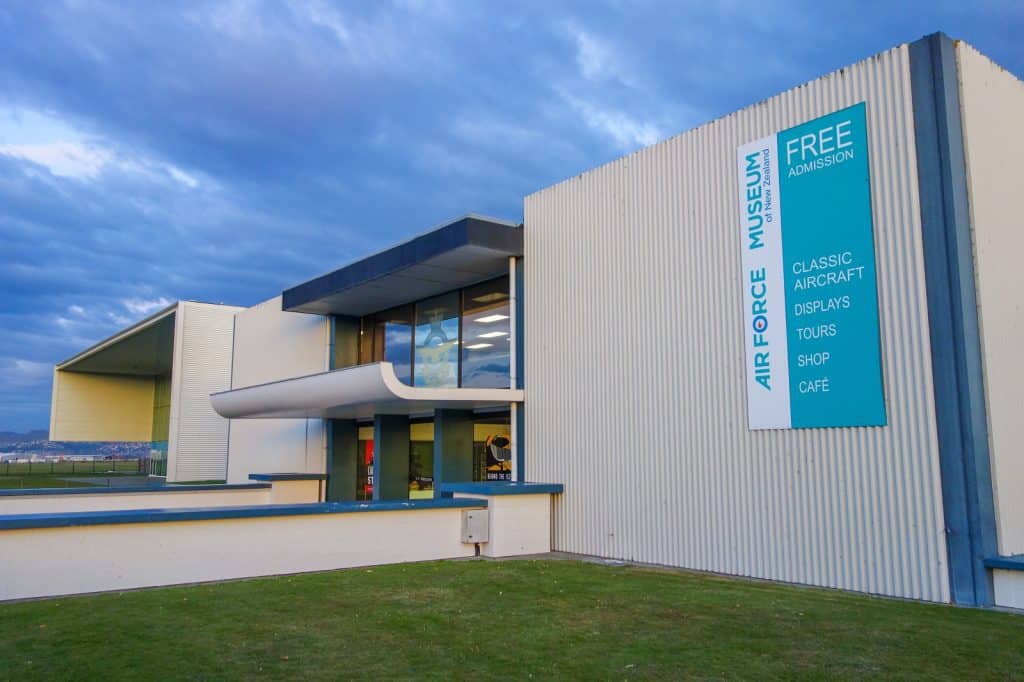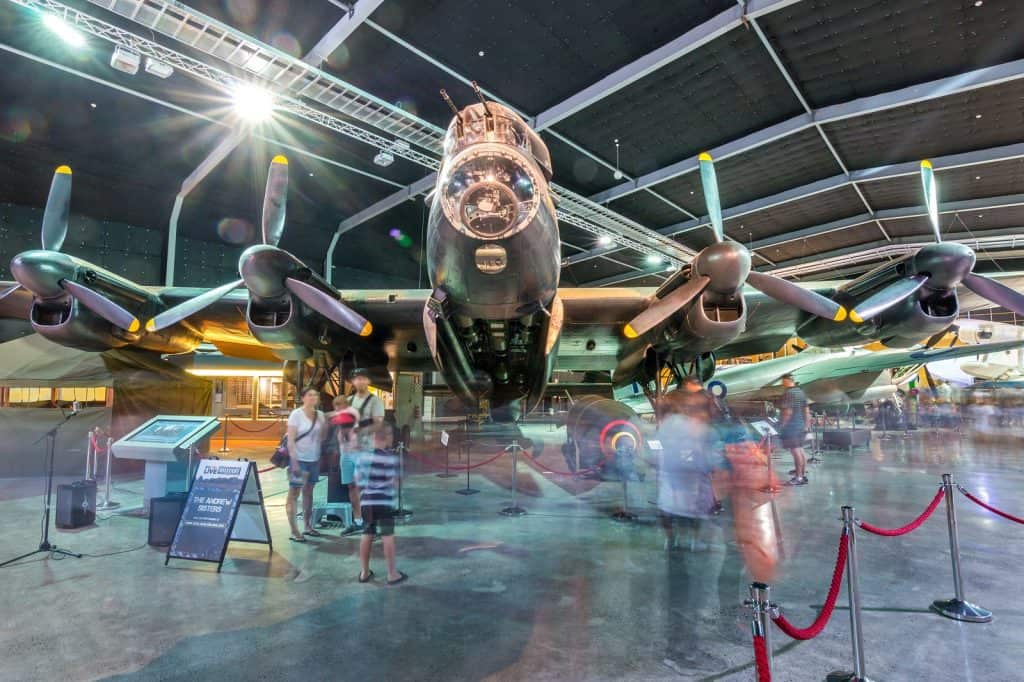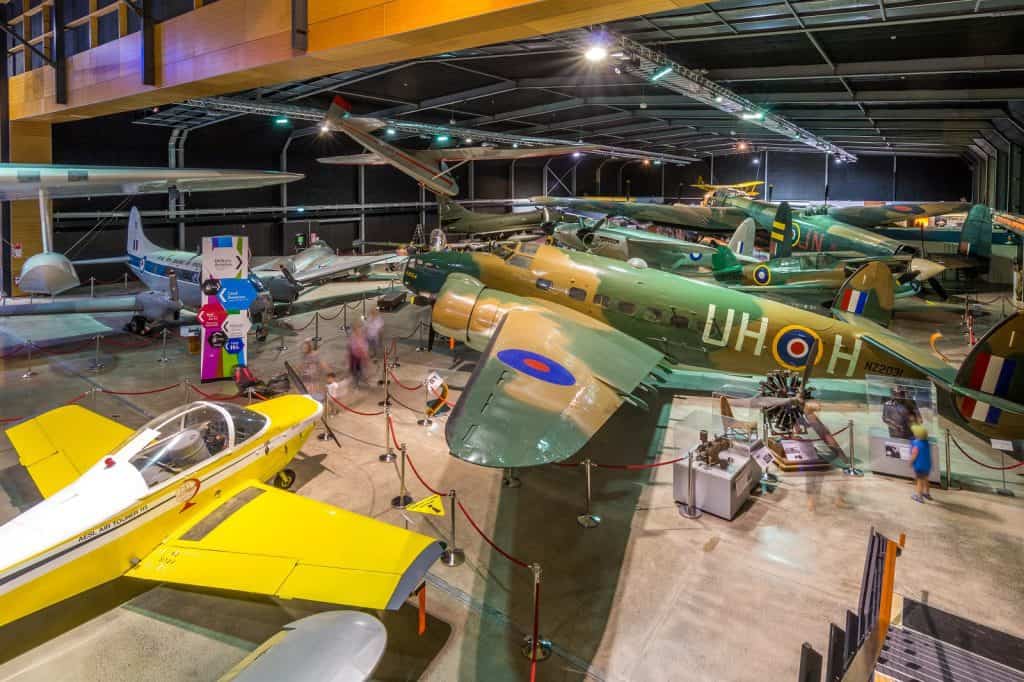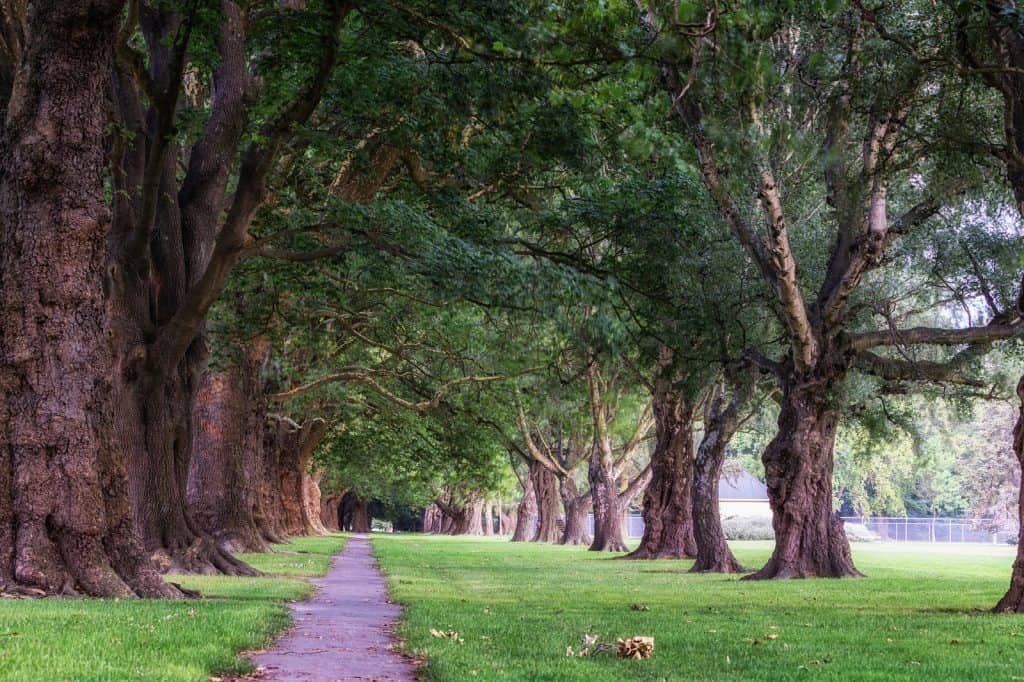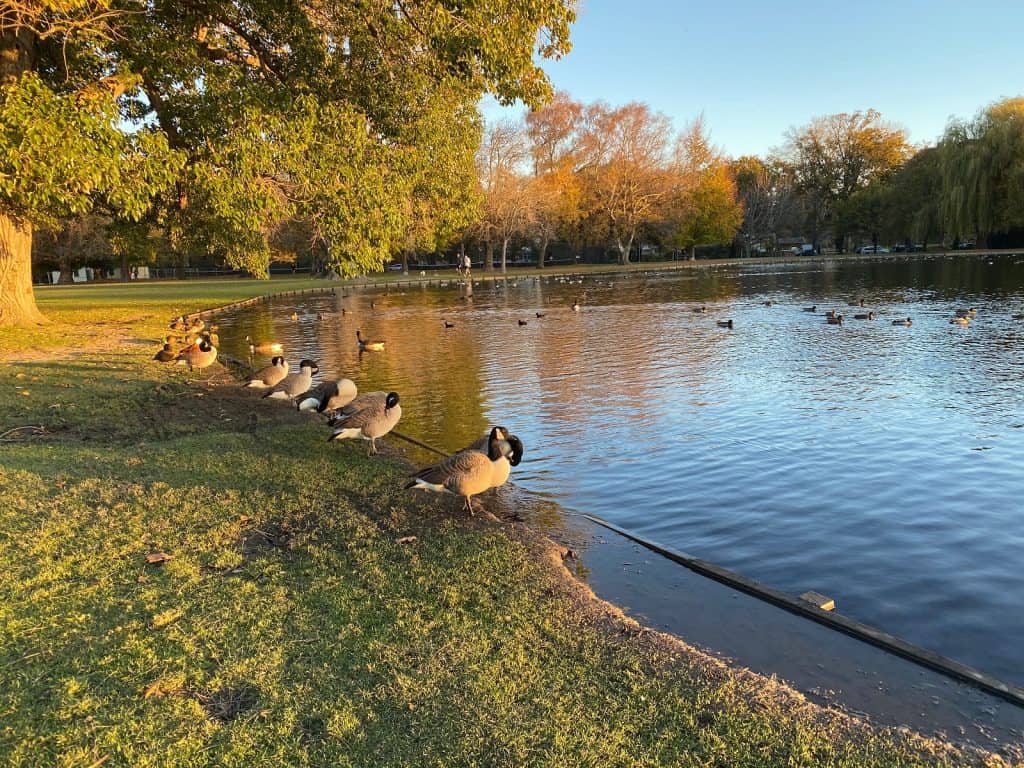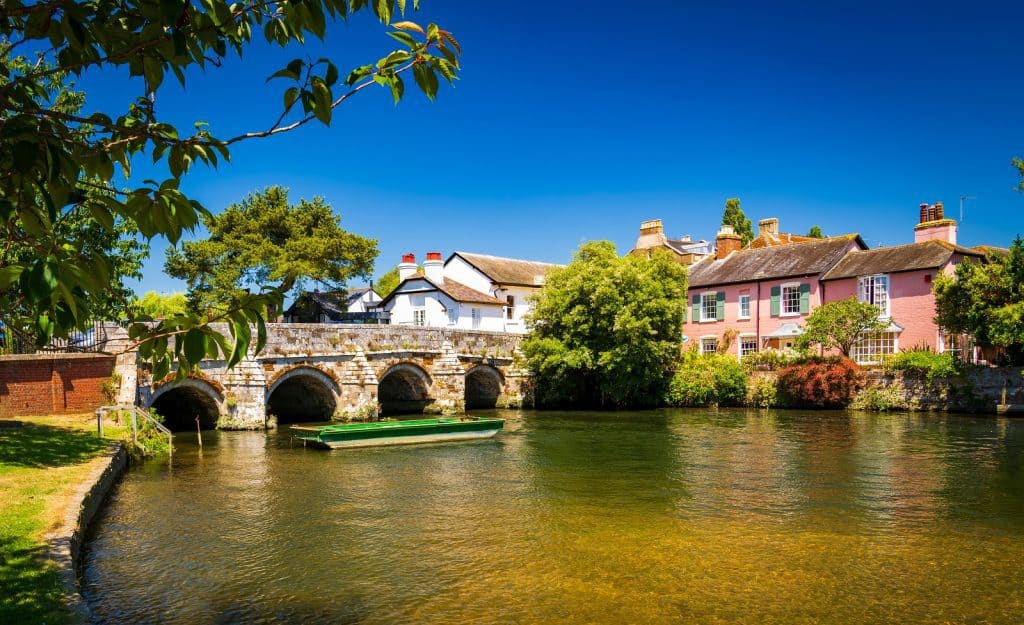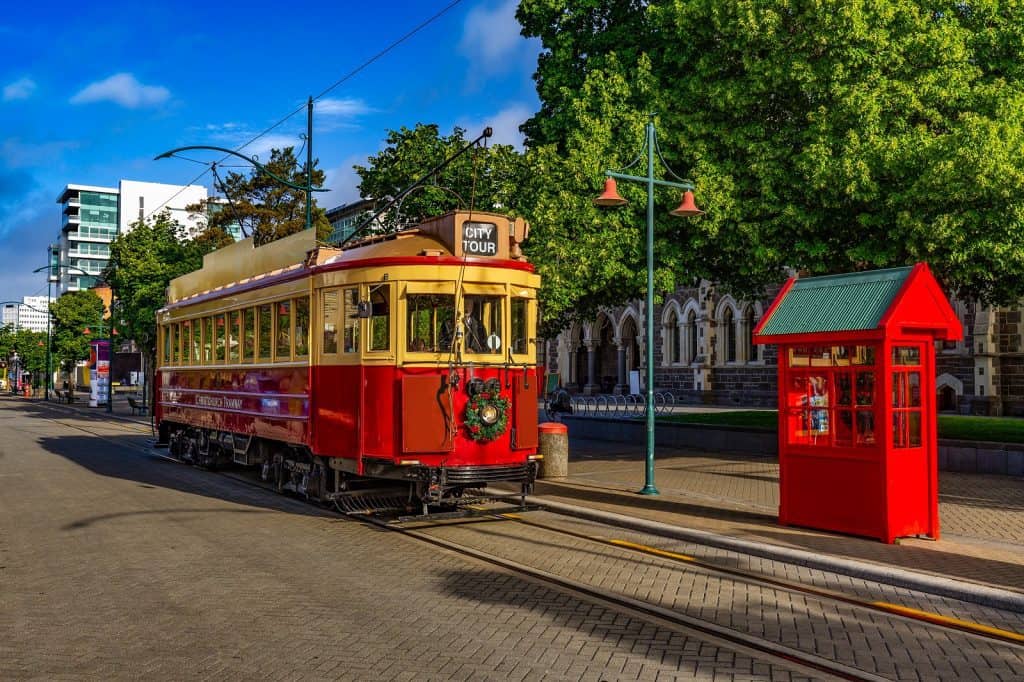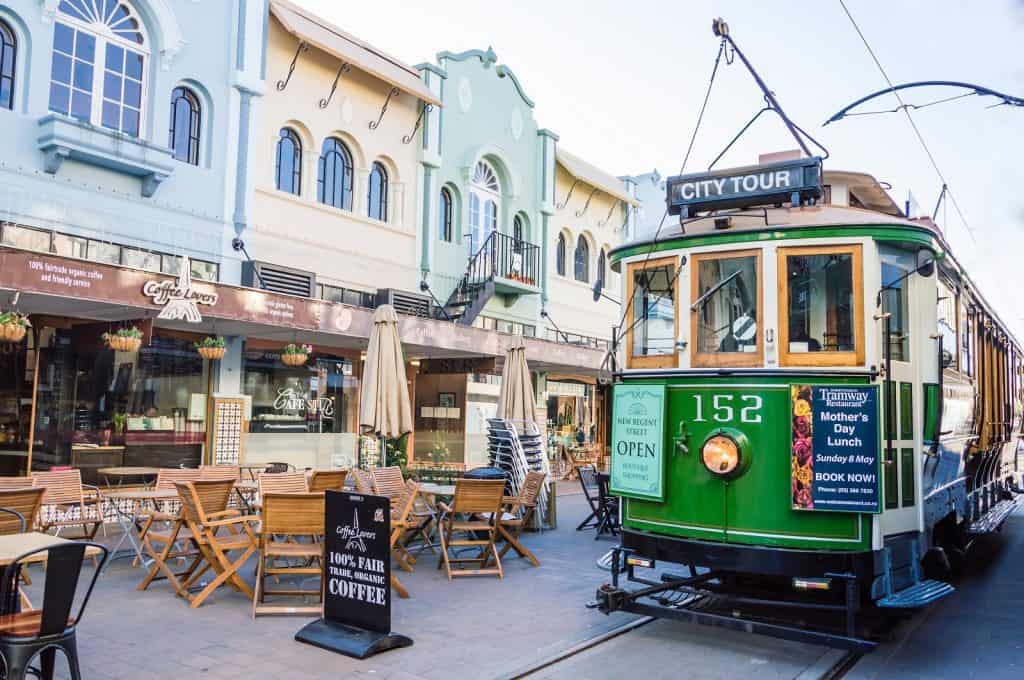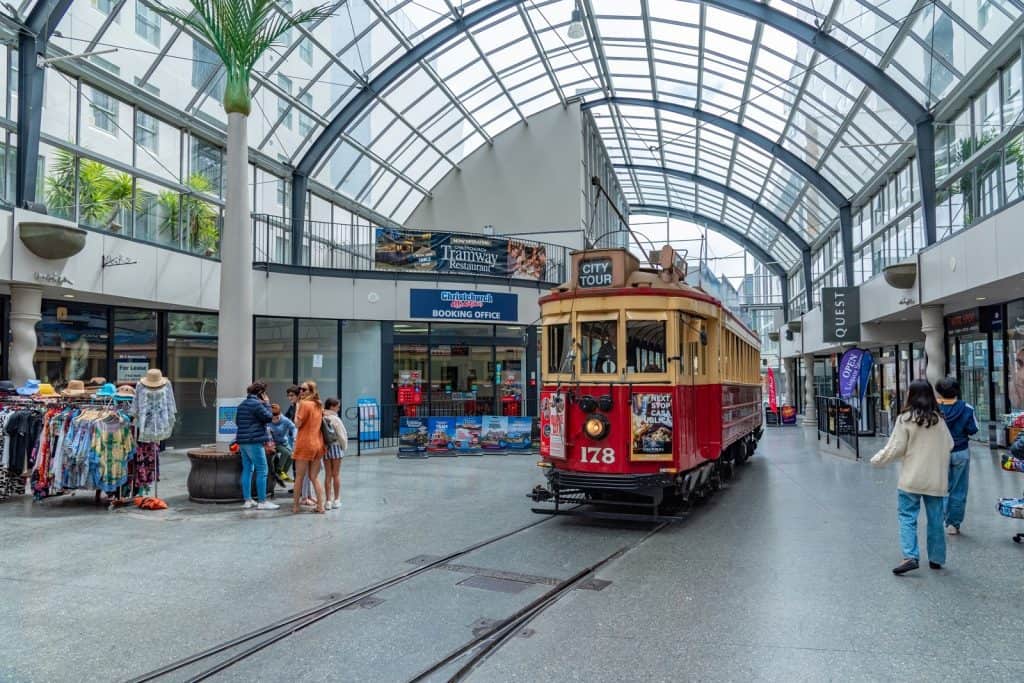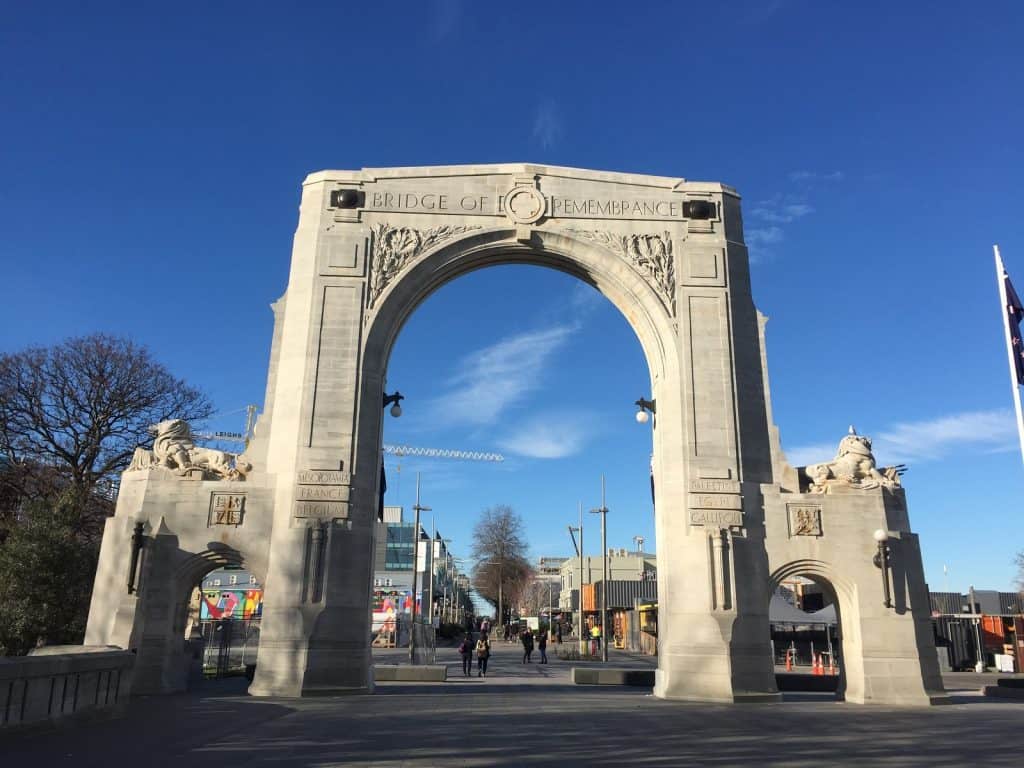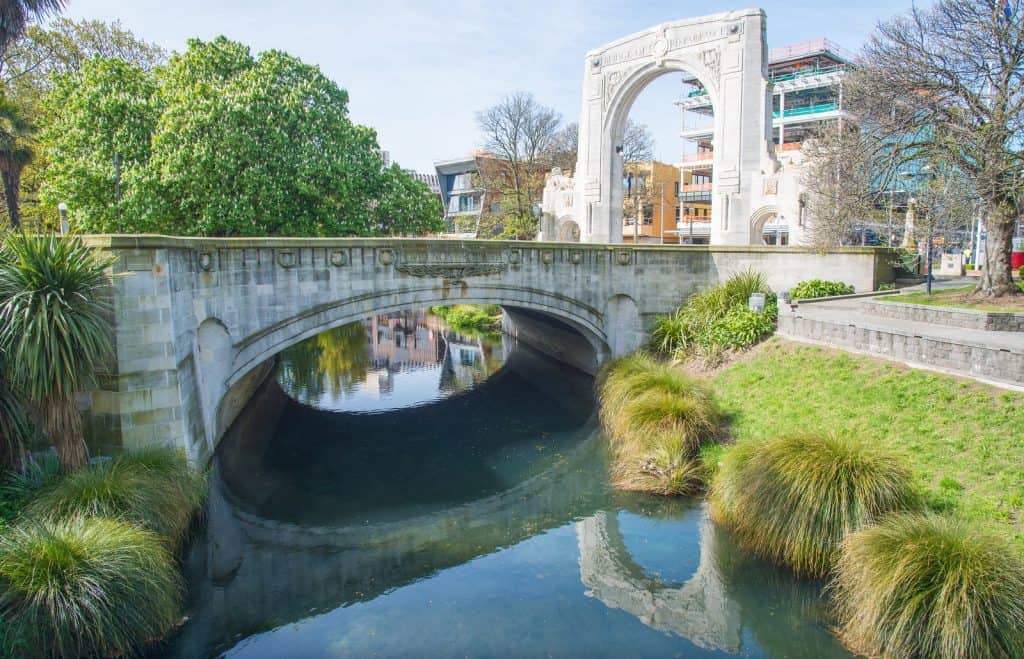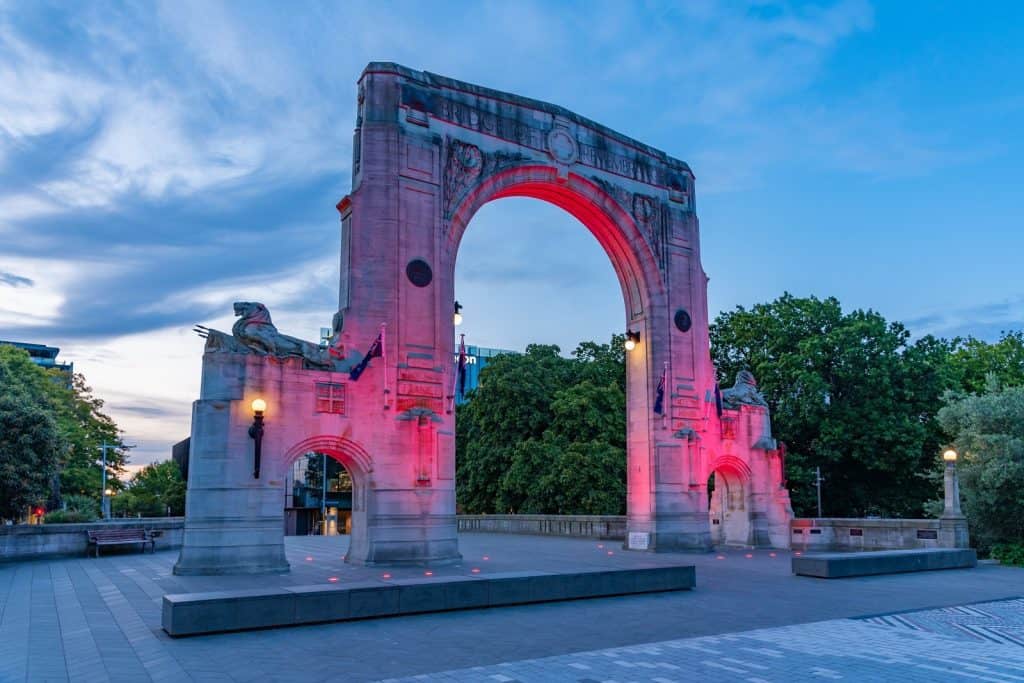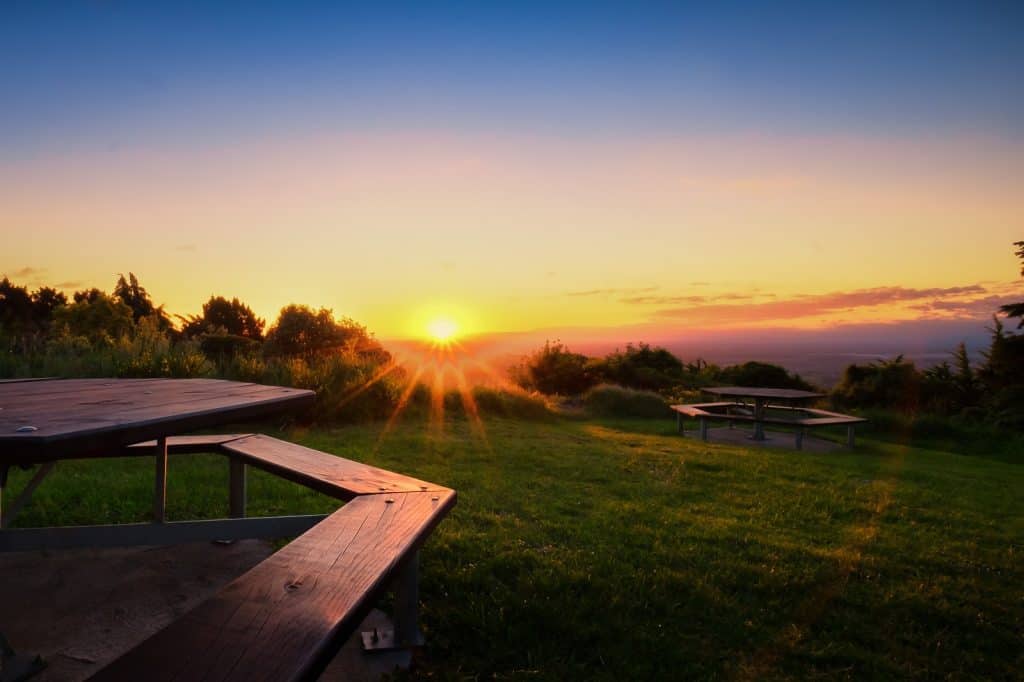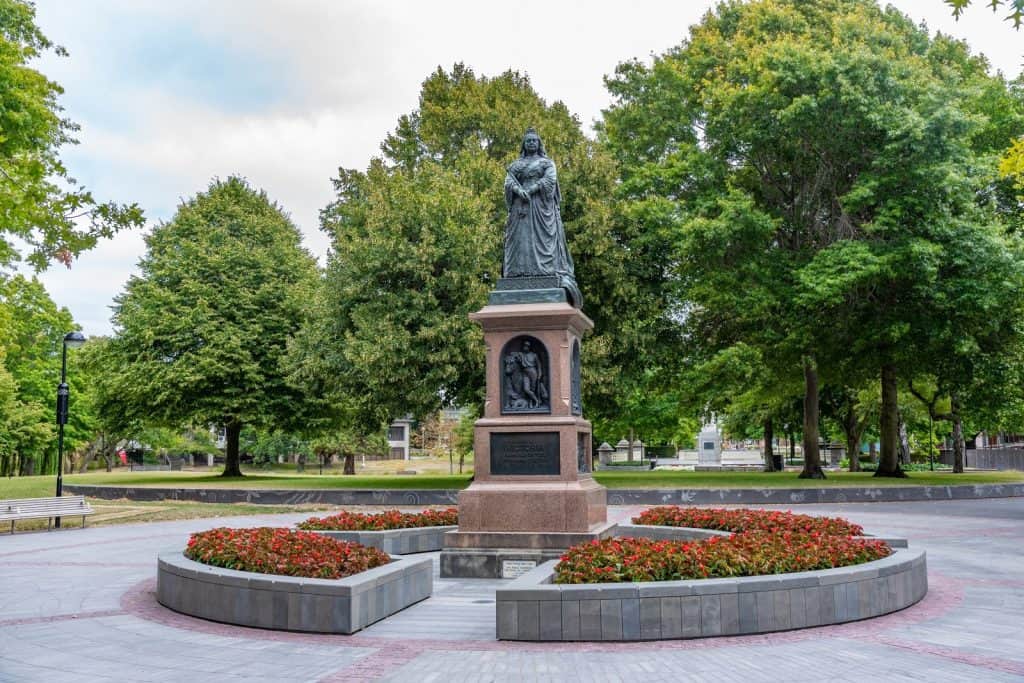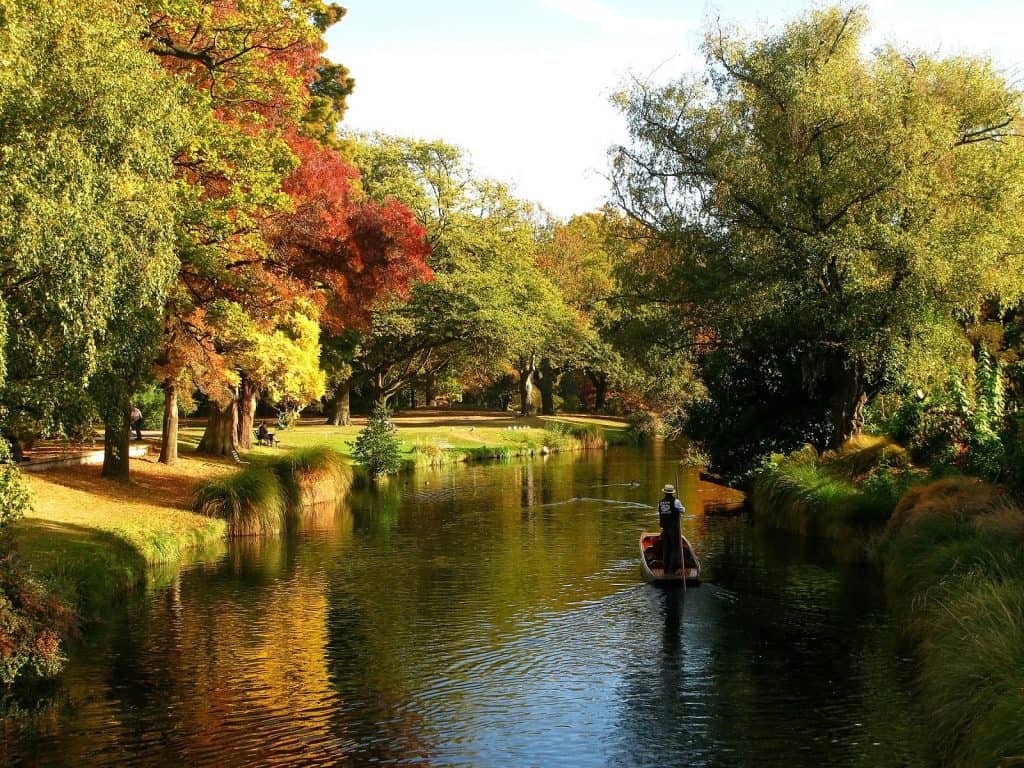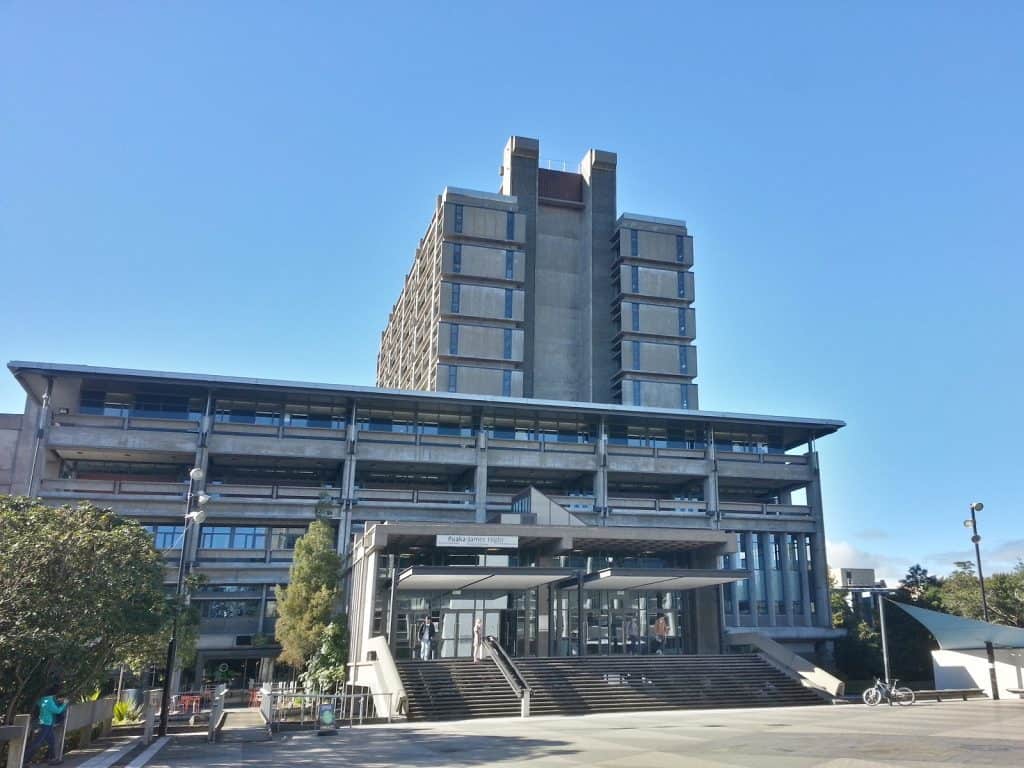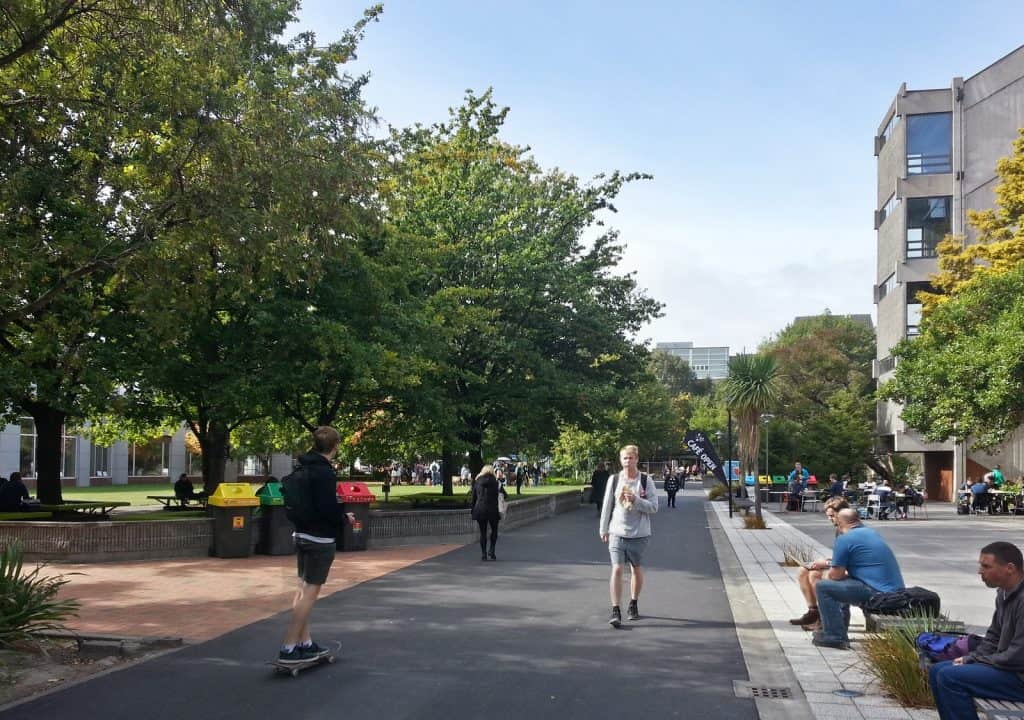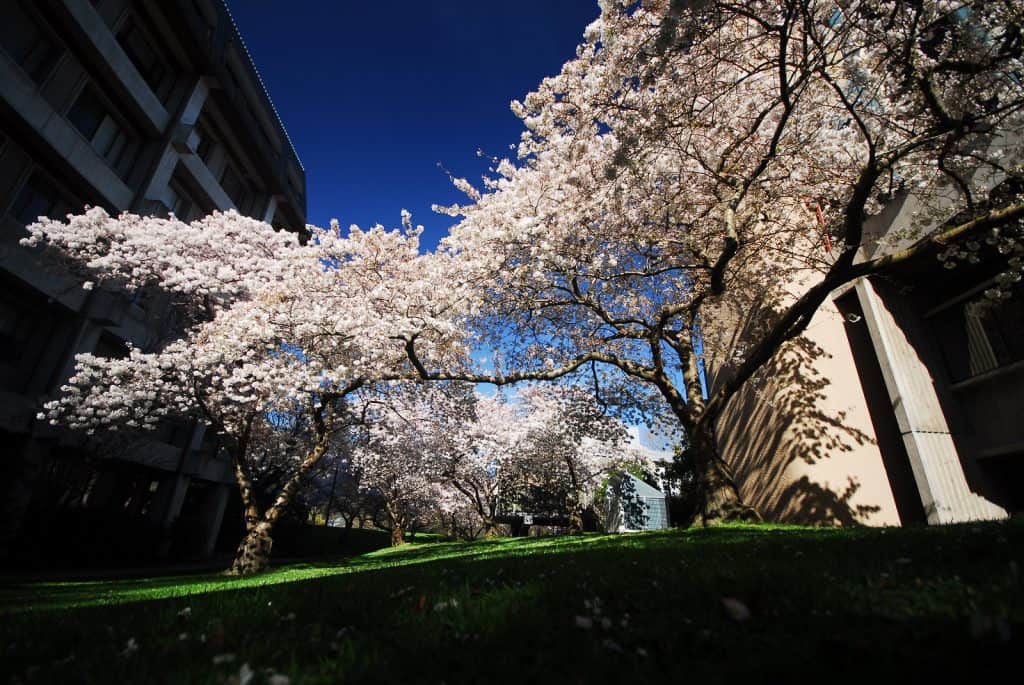This iconic city in the Canterbury region is located on the east coast of New Zealand’s South Island. Christchurch is a city whose many facets surprise and seduce. Scarred by two earthquakes in 2010 and 2011, visiting Christchurch is exploring a city whose reconstruction is driven by innovation, boundless creativity, and the art of the unconventional.
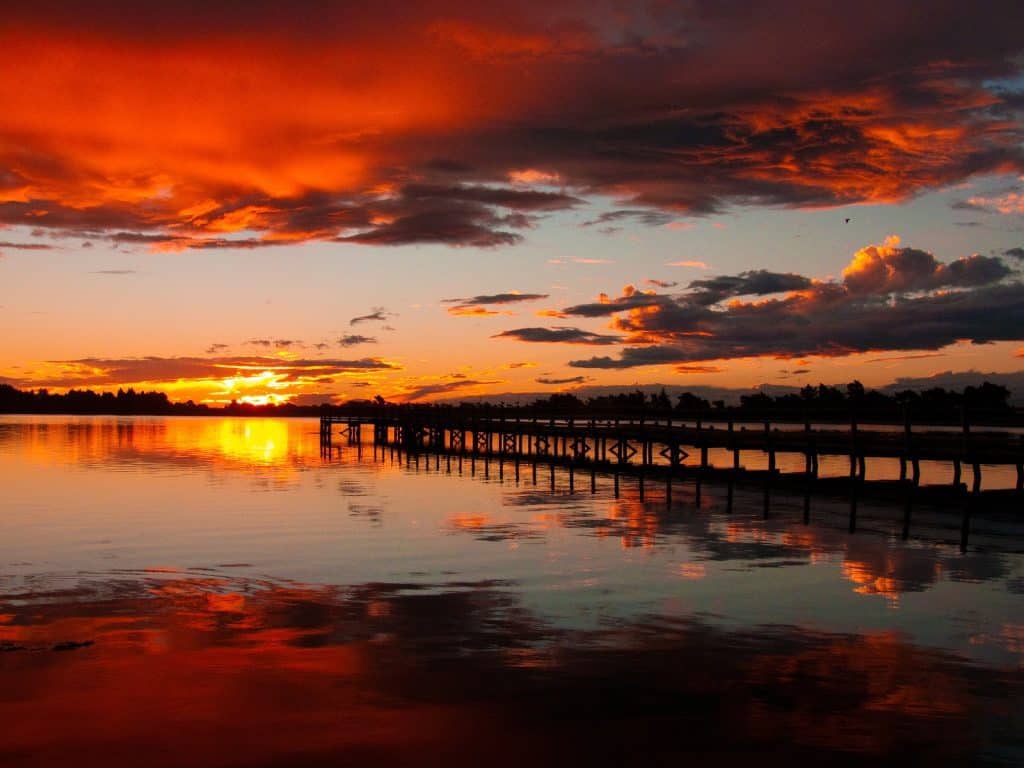
Also nicknamed the Garden City , nature and green space lovers will not be left wanting.
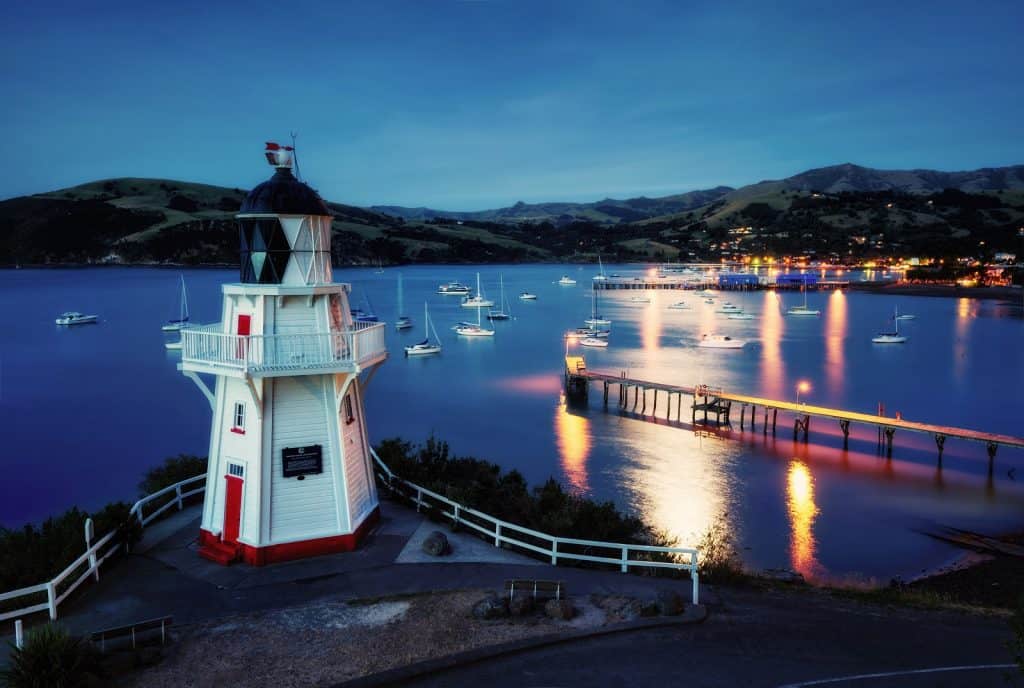
Christchurch Botanic Gardens
The Christchurch Botanic Gardens were founded in the mid-19th century. Their first planting was an English oak commemorating the marriage of Prince Albert and Princess Alexandra of Denmark.
The gardens cover approximately 21 hectares and are located adjacent to the Avon River next to Hagley Park. The Christchurch Botanic Gardens feature a variety of collections of exotic and native New Zealand plants, several conservatories, a nursery, a children’s playground, and a Weather Station.
Canterbury Museum
The Canterbury Museum is a museum in the center of Christchurch. The museum was founded very close to the date of the botanical garden mentioned above.
Its founder, Julius von Haast, was its first director and collector. The museum takes its name from the Canterbury region. The museum is classified as a Category I Historic Site by Heritage New Zealand.
Te Puna o Waiwhetū Art Gallery
Christchurch Art Gallery, officially named Christchurch Art Gallery Te Puna o Waiwhetū, is an art gallery located in Christchurch, New Zealand. It was funded by the Christchurch City Council. The gallery opened on 10 May 2003, replacing the city’s previous public art gallery, the Robert McDougall Art Gallery, which opened in 1932 and closed on 16 June 2002. It was located in the Christchurch Botanic Gardens, near the Canterbury Museum (both of which were mentioned above).
The building was designed by the Buchan Group and was used as the headquarters of the Christchurch Civil Defence after the 2010 Canterbury earthquake (mentioned at the beginning) and again after the February 2011 Christchurch earthquake (also mentioned in the introduction).
Christchurch Gondola
The Christchurch Gondola is a tourist attraction service offered by Christchurch Attractions. The gondola base is located in Heathcote Valley and traverses the slopes of Mount Cavendish in the Port Hills. It has a cable car with a 1-kilometer-long ride. From the top, you can see the city and the Canterbury Plains, including the Southern Alps.
Occasionally used as a means of transportation for visitors using the hiking trails on Mount Cavendish, the gondola is ranked as one of Christchurch’s top tourist attractions. The summit is 445 meters above sea level.
New Zealand Air Force Museum
The Air Force Museum of New Zealand (formerly known as the Royal New Zealand Air Force Museum) is a military and aviation museum. Dedicated to the history of the New Zealand Air Force, it is one of three official museums of the country’s armed forces, along with the National Army Museum in Waiouru and the Naval Museum at Torpedo Bay in Auckland.
The museum is located on the former Wigram Military Airfield, about 6 kilometers southwest of the city center. It covers the history of military aviation in New Zealand, from New Zealand pilots flying British formations in World War I, through World War II and the Cold War conflicts.
Hagley North Park
Hagley Park is a public park established in the mid-19th century by the provincial government. According to a government decree, Hagley Park is “forever reserved as a public park and shall be open for the recreation and enjoyment of the public.” Hagley Park has often been the site of large gatherings with several people; the Great Industrial Exhibition of 1882 and the New Zealand International Exhibition were held here at the beginning of the 20th century. Recently, the park has hosted several circuses and open-air concerts.
The Christchurch Botanic Gardens border Hagley Park. There, as mentioned above, you can find beautiful flowers and trees from around the world. The gardens attract birds to the park, and visitors often visit the park to observe the park’s plants and wildlife. The southern part of Hagley Park also contains netball fields and a helipad for Christchurch Hospital.
Christchurch Tram
The Christchurch Tram is the city’s tram system. This Tourist Tram opened on February 4, 1995, and operates on a single loop line. Service was discontinued after the 2011 and 2013 earthquakes.
The tram combines open-air transportation and guided tours of the city while traveling on a restored vintage tram. Tourists can learn about historic landmarks in downtown Christchurch, as well as Garden City’s recovery efforts following the 2011 earthquake. This tram offers 17 stations for transportation throughout the city.
Bridge of Remembrance
The Bridge of Remembrance is a war memorial in the city of Christchurch on the South Island of New Zealand.
It is dedicated to those who died in the First World War in New Zealand, but also commemorates other participants in both World Wars and subsequent conflicts in Korea, Vietnam, and other countries. This bridge belongs to the Christchurch City Council and was built over the eastern end of the Cashel Street Bridge, where it meets the City Mall.
Victoria Park
Victoria Park is a large recreational area in the Port Hills. The park was formally opened by William Rolleston in the late 19th century for Queen Victoria. The park has an information center and features open parkland, planted gardens, and pine woodland, with a variety of walking trails and a permanent orienteering course.
The mountain biking trails extend into the adjacent Bowenvale Reserve and include several challenging downhill routes, including the Nationals Down Hill Track. The park was the site of the murder of Honora Rieper in the 1954 Parker-Hulme case, a case that gained national notoriety as the woman was murdered by her eldest daughter and her daughter’s best friend. This inspired plays, novels, non-fiction books, and films.
University of Canterbury
The University of Canterbury, in English, University of Canterbury, in Māori, Te Whare Wānanga o Waitaha, is a public university in New Zealand, founded in 1873.
Its motto is Ergo tua rura manebunt (which translates as: your fields will remain yours). This verse is taken from the first eclogue in Virgil’s Bucolics. The university is located in Christchurch and currently has approximately 18,000 students.
As we can see, this place is a must-see if you’re traveling to the South Island. Christchurch is a surprising and creative city.
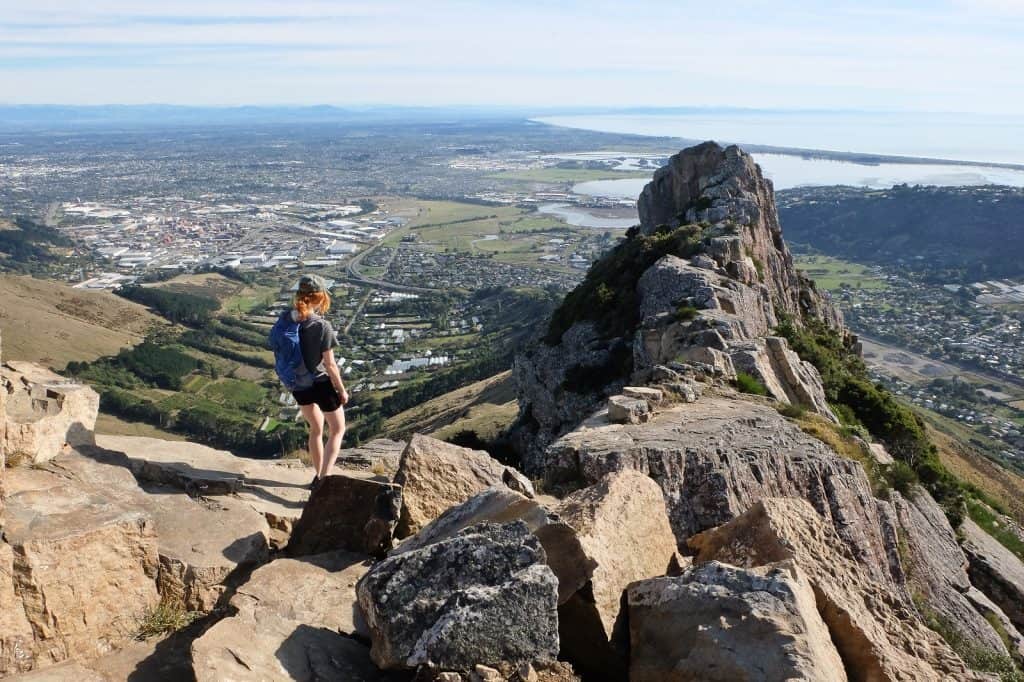
It presents a completely new face with its districts, its transitional church, and its Quake City Museum, which commemorates the earthquakes of 2010 and 2011. Its charm is revealed during a boat trip on the River Avon, on an Imperial bus, or on a tram.

The viewpoints atop the Port Hills, which overlook the town and Lyttelton Bay, are magnificent. Hiking and mountain biking enthusiasts have plenty to choose from among the numerous trails in the hills and surrounding natural areas.
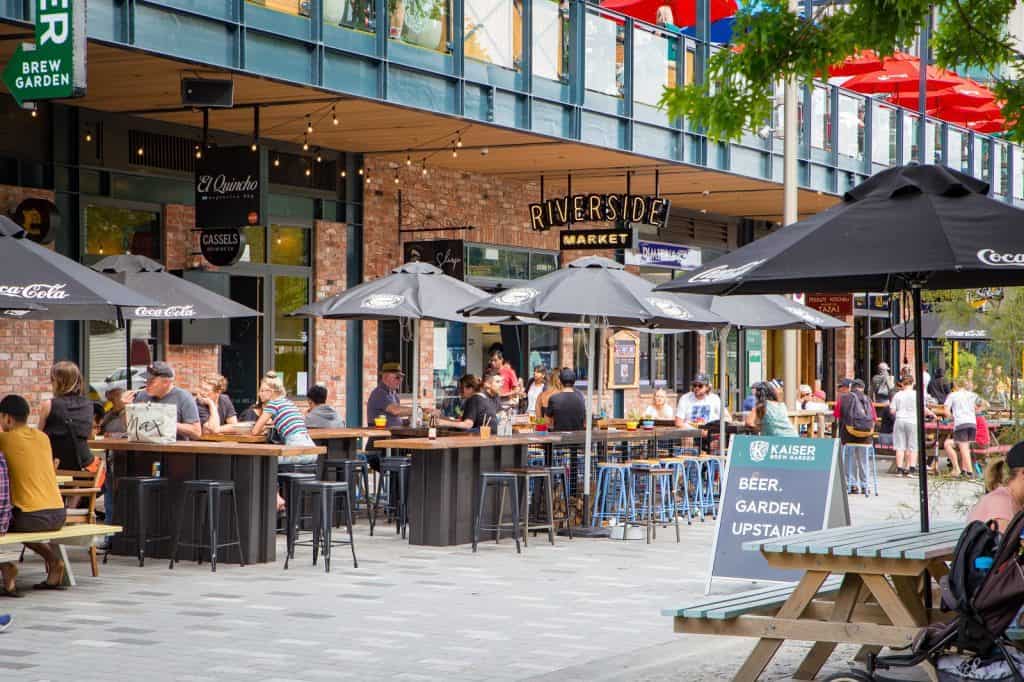
Among the activities to do with friends or family, Willowbank Wildlife Reserve offers an encounter with Maori culture and New Zealand’s endemic animals. It’s a must-see!
